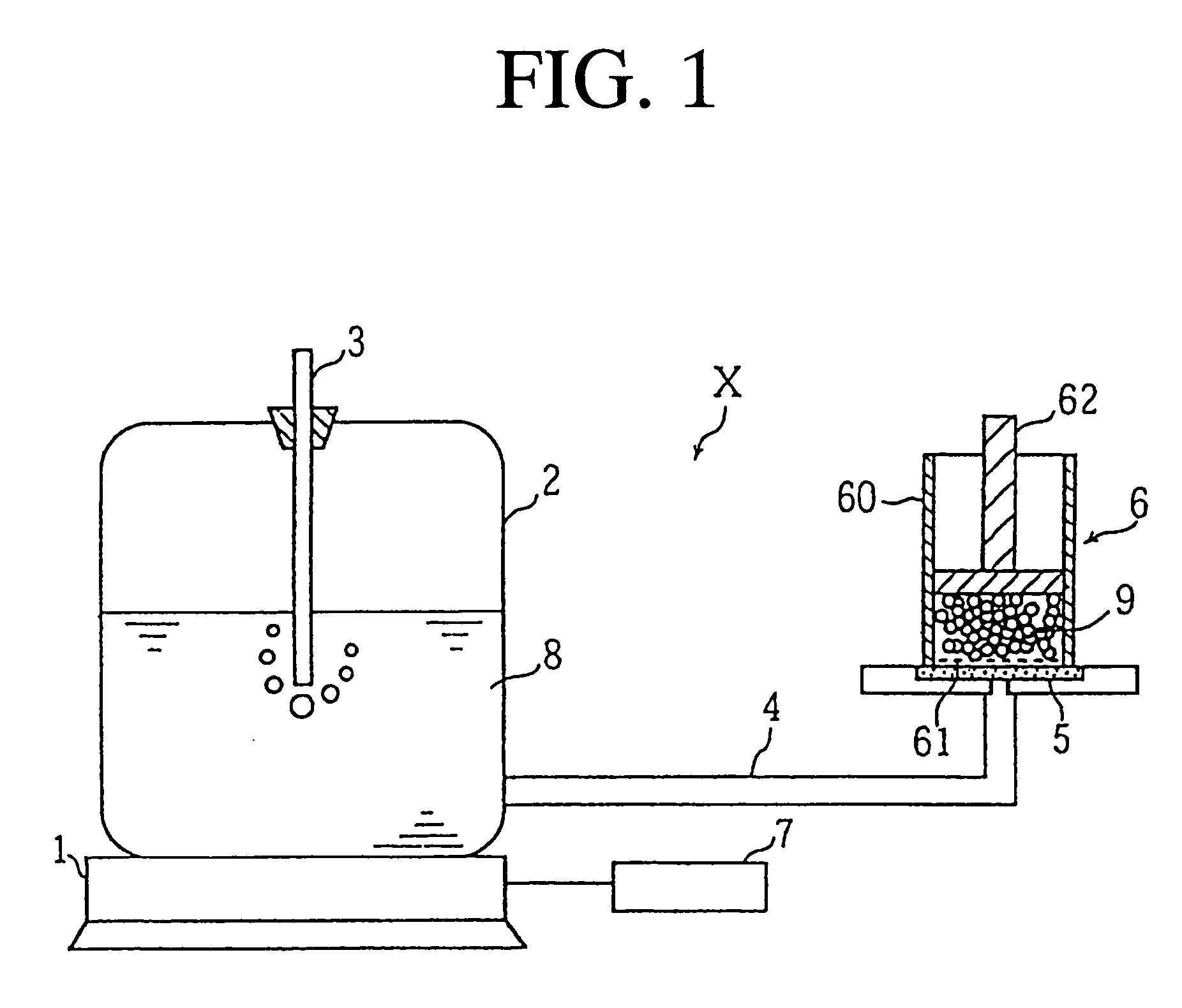Method for producing water-absorbing resin
a technology of water-absorbing resin and water-absorbing material, which is applied in the field of process for preparing water-absorbing resin, can solve the problems of poor unsatisfactory water-absorbing ability of water-absorbing resin under pressure, and inability to exhibit satisfactory water-absorbing ability, etc., and achieve excellent water-absorbing ability and water-absorbing ability.
- Summary
- Abstract
- Description
- Claims
- Application Information
AI Technical Summary
Benefits of technology
Problems solved by technology
Method used
Image
Examples
example 1
[0038] The amount 340 g of n-heptane and 0.92 g of a sucrose fatty acid ester (manufactured by MITSUBISHI CHEMICAL CORPORATION under the trade name of S-370) having an HLB of 3.0 were added to a 1000 mL-five-necked cylindrical round bottomed flask equipped with a stirrer, a reflux condenser, a dropping funnel, a thermometer and a nitrogen gas inlet tube. The mixture was dispersed in the flask, and the temperature of the dispersion was raised to dissolve the mixture, and thereafter the resulting solution was cooled to 55° C.
[0039] Separately from the above, 92 g (1.02 mol) of an 80% by weight aqueous solution of acrylic acid was added to a 500 mL-Erlenmeyer flask. Thereto was added dropwise 102.2 g (0.76 mol) of a 30% by weight aqueous sodium hydroxide with cooling from external, to neutralize 75% by mole of acrylic acid. Further, 50.2 g of water, 0.11 g (0.41 mmol) of a water-soluble radical polymerization initiator potassium persulfate, and 8.3 mg (0.047 mmol) of a crosslinking ag...
example 2
[0044] The same procedures as in Example 1 were carried out except that the amount of sodium hypophosphite monohydrate in Example 1 was changed to 30 mg (0.28 mmol), to give 222.5 g of a water-absorbent resin.
example 3
[0045] The same procedures as in Example 1 were carried out except that the amount of sodium hypophosphite monohydrate in Example 1 was changed to 120 mg (1.13 mmol), to give 217.5 g of a water-absorbent resin.
PUM
| Property | Measurement | Unit |
|---|---|---|
| Substance count | aaaaa | aaaaa |
| Solubility (mass) | aaaaa | aaaaa |
Abstract
Description
Claims
Application Information
 Login to View More
Login to View More - R&D
- Intellectual Property
- Life Sciences
- Materials
- Tech Scout
- Unparalleled Data Quality
- Higher Quality Content
- 60% Fewer Hallucinations
Browse by: Latest US Patents, China's latest patents, Technical Efficacy Thesaurus, Application Domain, Technology Topic, Popular Technical Reports.
© 2025 PatSnap. All rights reserved.Legal|Privacy policy|Modern Slavery Act Transparency Statement|Sitemap|About US| Contact US: help@patsnap.com

